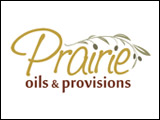The Executive Director of the Swine Health Information Center says population control is the best option for reducing the risk of disease transmission from feral pigs to commercial pigs.
Last month, as part of its effort to prevent foreign animal disease, the U.S. Department of Agriculture announced 75 million dollars in funding through the Feral Swine Eradication and Control Pilot Program for the eradication and control of feral pigs in the United States.
Dr. Paul Sundberg, the Executive Director of the Swine Health Information Center says foreign animal diseases, such as Classical Swine Fever and African Swine Fever, could become a real issue should they become endemic in feral swine in the U.S.
We know that PRRS, for example, is endemic in feral swine so that remains then a risk of infection to commercial pigs. We know that in the U.S. Pseudorabies is endemic in feral swine. That remains a risk to commercial pigs. For Pseudorabies, we’re free of Pseudorabies in the commercial herd but we still have it in the feral pigs. So our issue there is disease prevalence, disease incidence, disease pressure within feral pigs and how it might spill over into the commercial herd which may affect us for regular production. But, if we get African Swine Fever or Classical Swine Fever within feral pigs, we could end up with issues of market access because of those and their spillover into commercial pigs.
I don’t know that anybody thinks we can vaccinate our way out of a disease in feral pigs or any other manner to be able to control disease in feral pigs. The best way we’ve got to control that risk is to keep that population as low as possible and decrease the opportunity for feral pigs to come into contact with our commercial herds.
~ Dr. Paul Sundberg, Swine Health Information Center
Dr. Sundberg acknowledges, as African Swine Fever expands in other regions, the risk pressure on North America increases.




